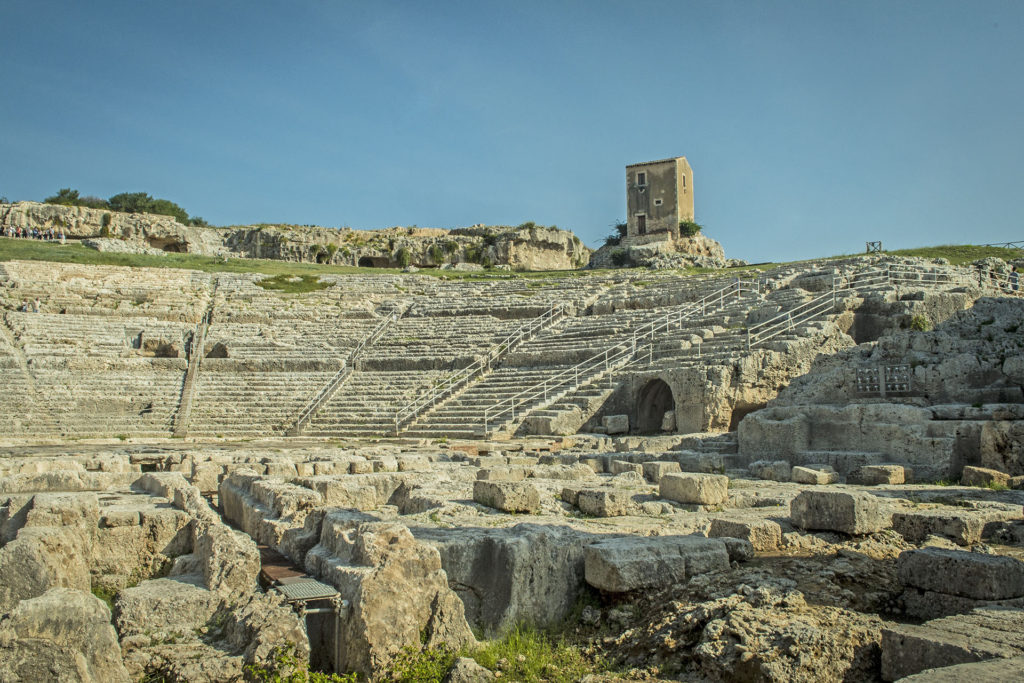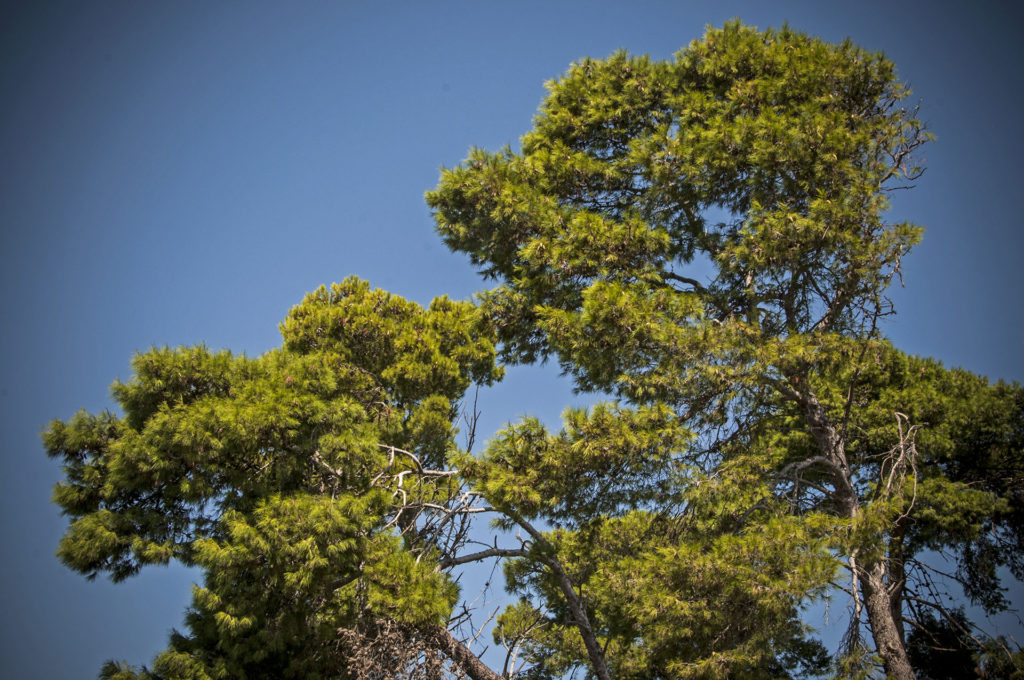The secret of acoustics in Greek theatres can be traced back to their semi-circular shape, which helps to “hold” sound. Great importance is also attributed to the steps and their slope: the stone suitably inclined structures act like acoustic filters.
Thanks to the stone steps, it was possible to reduce the low frequencies that disturbed the audience’s ability to listen and accentuate, on the other hand, the more acute sounds such as actors’ voices or musical instruments.
 Also well known in theatrical performances were the artifices used to create acoustic and visual “special effects”.
Also well known in theatrical performances were the artifices used to create acoustic and visual “special effects”.
One of the most famous scenic machines, the bronteion, was used to reproduce the sound of thunder in scenes of strong dramatic pathos, such as the apparition of an angry deity or a disastrous event, and was made up of leather sacks filled with stones that were thrown into metal containers, perhaps made of brass, thus emitting a loud “rumble”.
In ancient times, the choice of the place of construction of the theater was not random.
A typical feature of the Greek theaters was indeed the enhancement of the panoramic view. Even the Theater of Syracuse should not be exempt from this custom by offering a view of the arch of the port and the island of Ortigia.
Sitting on the steps of the Theater of Syracuse, the view of the Mediterranean is screened today by a huge expanse of trees and small shrubs from which the light filters clear and greenish by day, and red and warm during sunset.
Immersed in nature, the Greek theater of Syracuse welcomes visitors among the fragrances and aromas of the many species of plants that sorround the park.
Among the smells that belong to the earth, especially emerges the Mediterranean pine.
 This tree, called maritime pine tree, is widespread in Sicily and is distinguished from the tree that produces pine nuts thanks to the smell of its needles.
This tree, called maritime pine tree, is widespread in Sicily and is distinguished from the tree that produces pine nuts thanks to the smell of its needles.
By pinching the needles in the hands, pine from pine nuts gives off a more delicate and light scent, very similar to that of its small edible seeds, while the maritime one produces a more intense and sour essence.